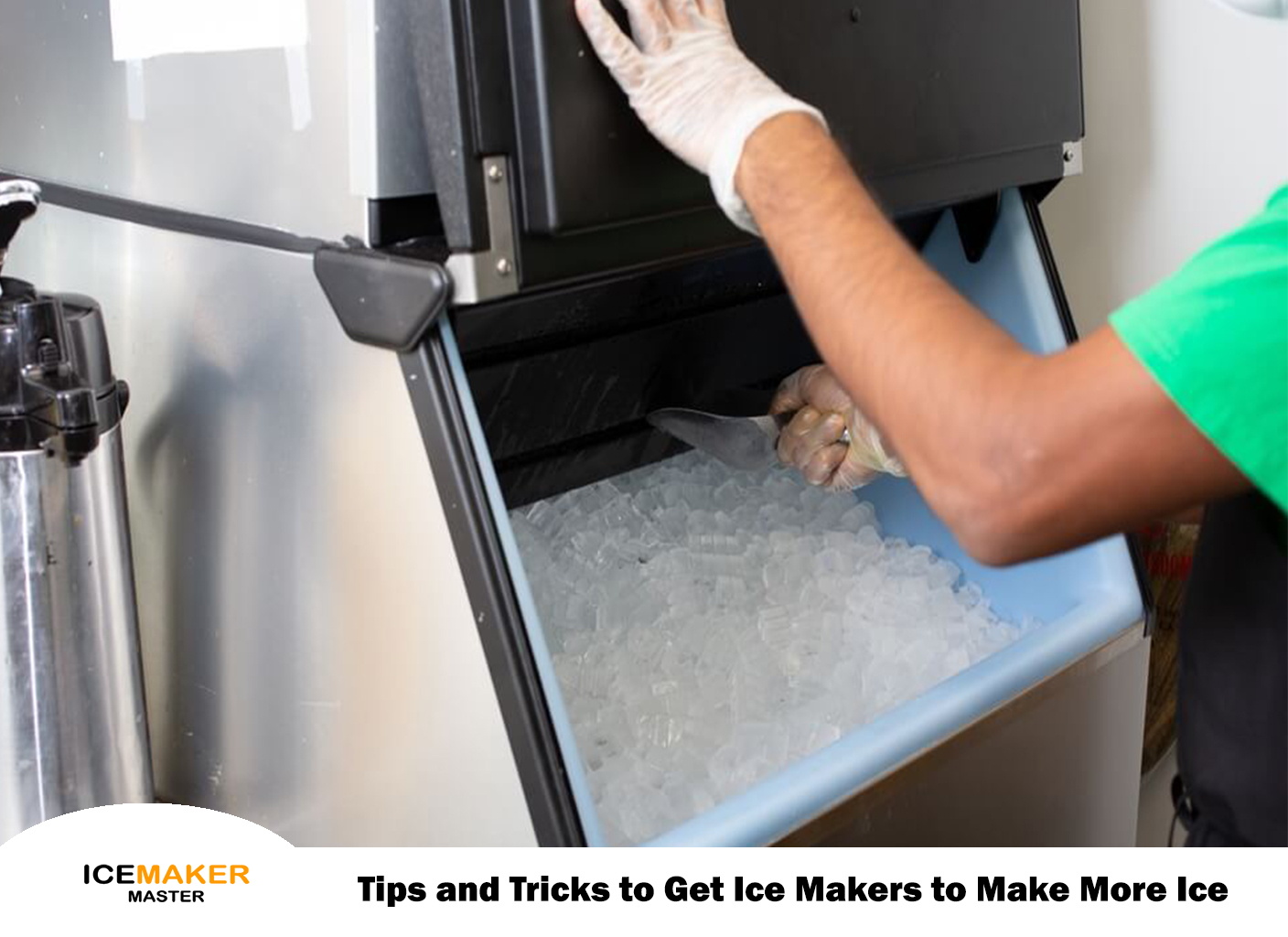Ice makers are one of the most important appliances nowadays. Especially in summer, when you want a nice chilled beverage or you want to serve the drinks. Sometimes the ice makers start making less ice for many reasons, which makes you think about how can I increase the ice makers ice making capacity.
In this blog, we will give you 10 tips and tricks to get your ice makers to make more ice.
Check Water Supply
To enhance your ice maker’s efficiency, it is crucial to examine and guarantee a reliable water supply. Improper water flow is a common culprit for reduced ice production.
Begin by inspecting the water line for any kinks, leaks, or blockages that might impede the water’s path to the ice maker. Ensure the water valve is fully open to maintain a consistent and sufficient water supply.
This meticulous check of the water supply can address one of the primary reasons for diminished ice production, promoting optimal functioning of your ice maker and ensuring a steady output of ice for your beverages.
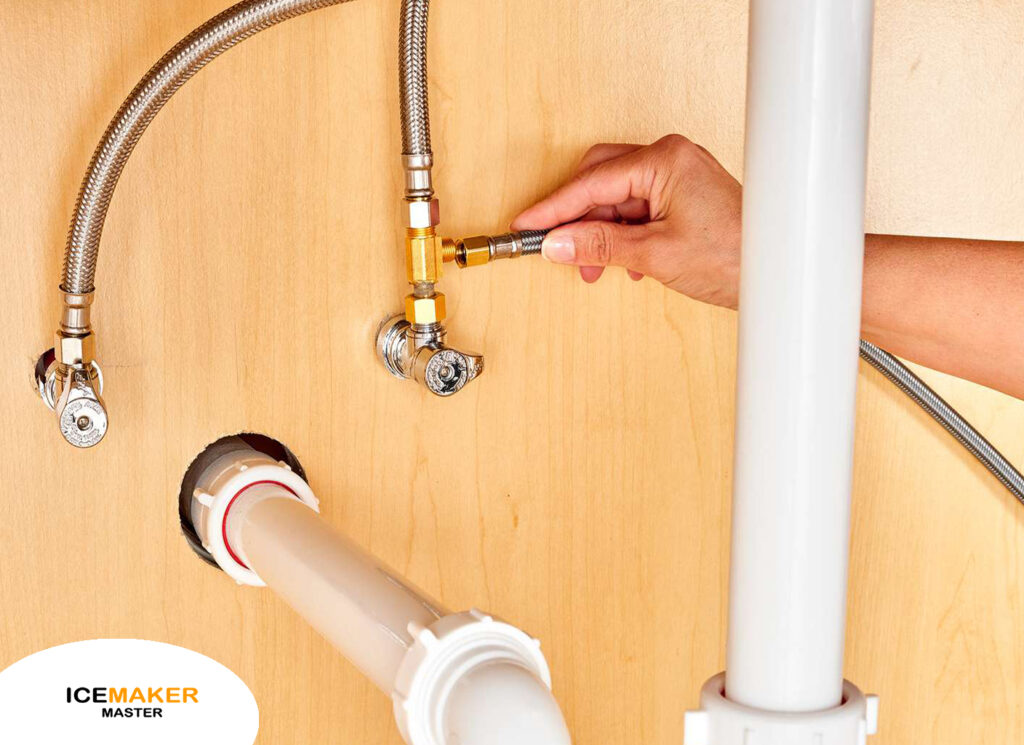
Clean Water Filter
Regularly maintaining your refrigerator’s water filter is essential for optimal ice maker performance. If your fridge features a water filter, it could become clogged with impurities over time, hindering water flow to the ice maker.
It’s really important to follow what the manufacturer suggests and change the filter regularly. By doing so, you ensure that the water supplied to the ice maker is free from contaminants, allowing it to operate efficiently.
A clean water filter not only improves the quality of the ice produced but also prevents potential damage to the ice maker components caused by restricted water flow. This simple maintenance step contributes significantly to the overall functionality of your ice maker. Learn more if you want to change the water filter – Click here.
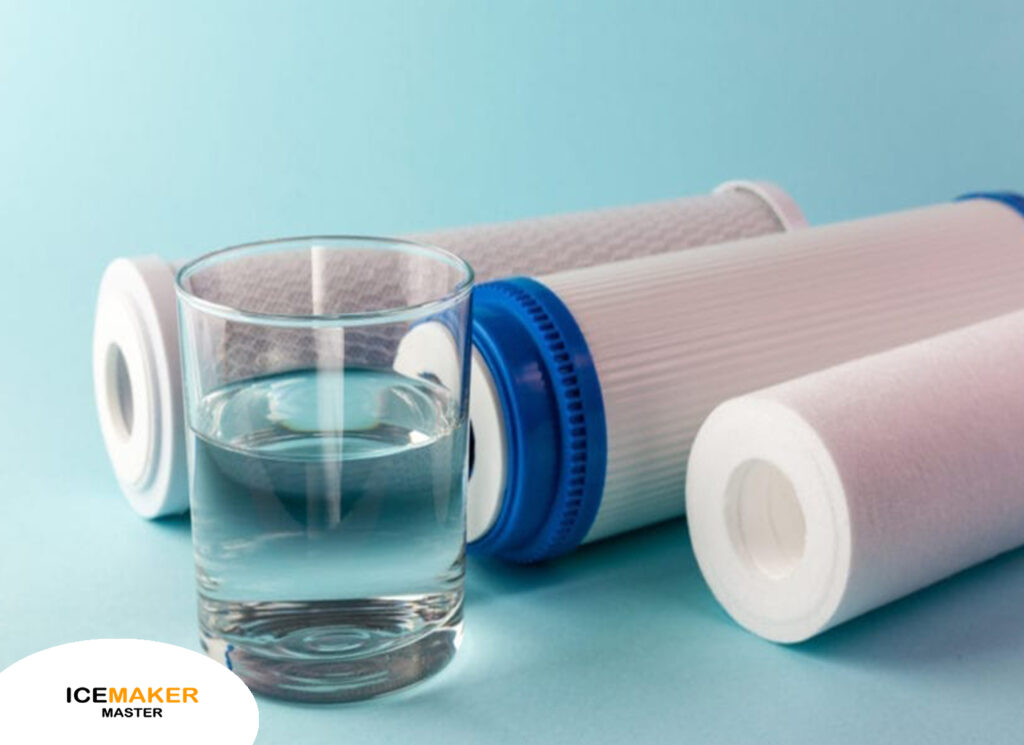
Adjust the Temperature
Ensuring your freezer is set at the right temperature significantly impacts your ice maker’s efficiency. Verify that the freezer is ideally set between 0 and 5 degrees Fahrenheit (-18 to -15 degrees Celsius).
Maintaining these colder temperatures is crucial as it fosters optimal ice production. If the freezer is too warm, it may impede the ice-making process.
Keep your freezer at the suggested temperature, and you will make the right conditions for making ice easily. This straightforward adjustment not only enhances the performance of your ice maker but also ensures a steady supply of ice for your cooling needs.
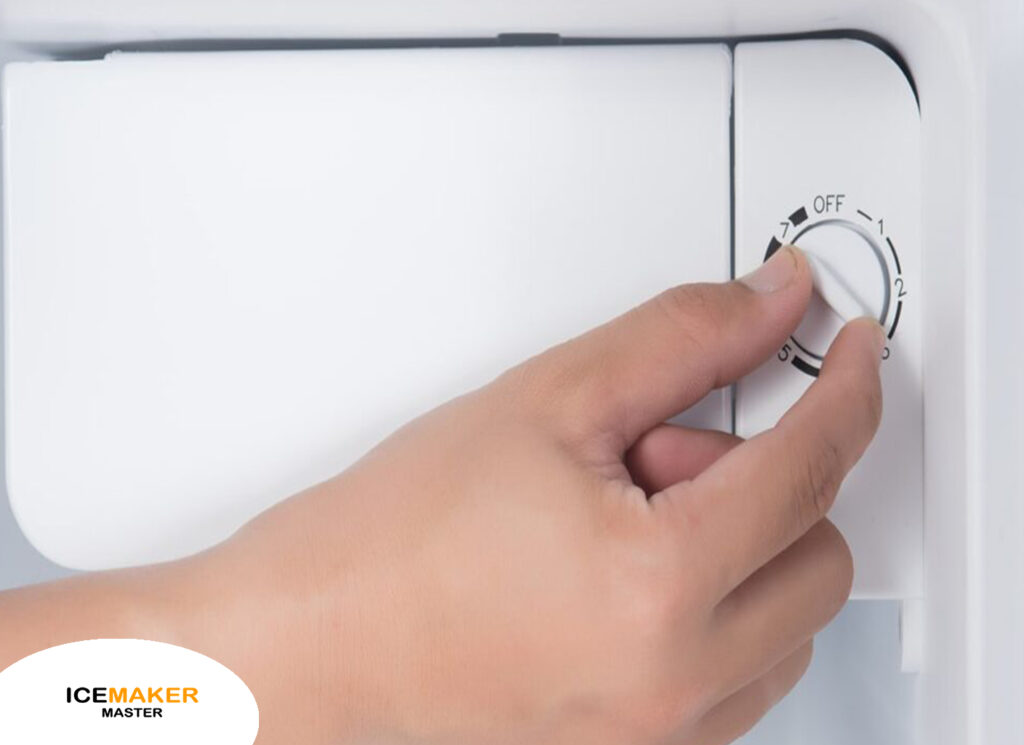
Empty the Ice Bin Regularly
It is essential to regularly empty your ice bin to maintain a consistent ice production cycle. When the bin is full, your ice maker might stop producing until there is space for more ice.
By regularly emptying the bin, you ensure a smooth and uninterrupted ice-making process. This practice prevents the ice maker from halting production due to a lack of space, allowing it to continue efficiently meeting your ice needs.
A simple routine of keeping the ice bin clear contributes to a hassle-free experience, ensuring you always have an ample supply of ice whenever you need it.
Also Read - Why is my ice maker not working? Find various troubleshooting techniques and do at home.
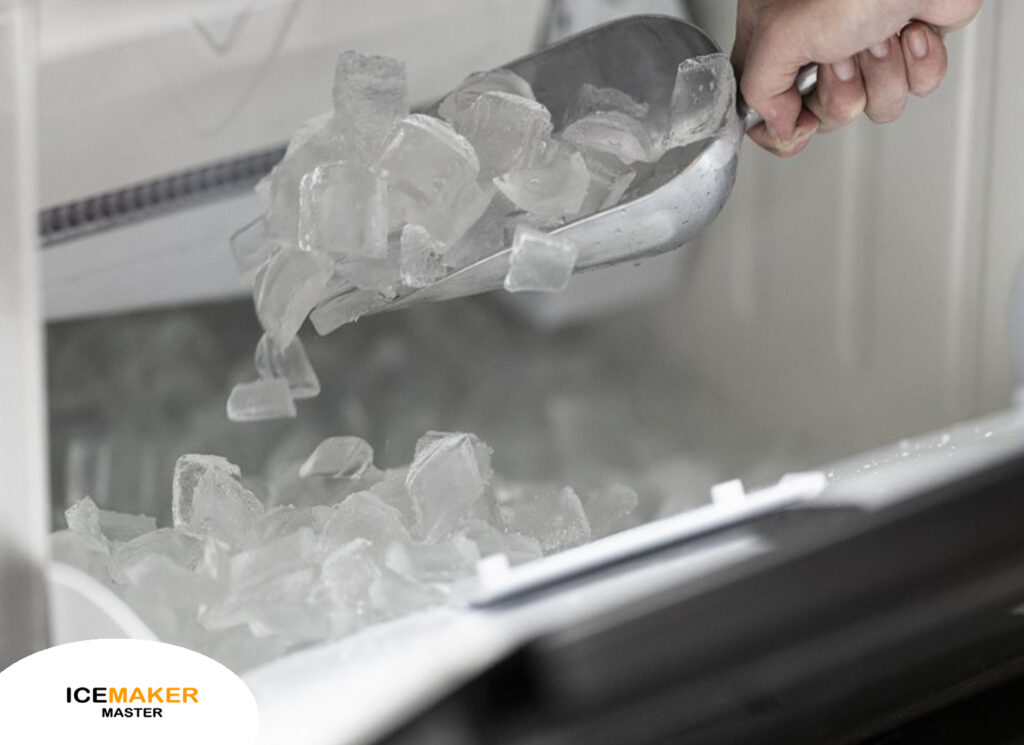
Clean the Ice Maker and Ice Bin
Regularly cleaning your ice maker and ice bin is crucial for optimal performance. Over time, mineral deposits and mold can accumulate and make negative impact on the ice maker’s efficiency.
To maintain a sanitary and effective ice-making environment, use a mixture of water and vinegar to clean the ice maker and bin thoroughly. This solution helps remove built-up residues, ensuring that your ice is free from contaminants and that the ice maker functions at its best.
This simple cleaning routine not only enhances performance but also contributes to the longevity of your appliance, providing you with consistently clean and refreshing ice for your beverages.

Level Your Refrigerator
Maintaining a level refrigerator is crucial for optimal ice maker performance. If your refrigerator is not balanced, it can negatively affect the ice-making process. Confirm that your refrigerator is on a level surface and, if needed, adjust the leveling feet to ensure proper water distribution and ice formation.
A level refrigerator promotes even water flow, preventing potential disruptions in the ice-making cycle. By addressing this simple yet important aspect, you enhance the efficiency of your ice maker, ensuring it operates smoothly and consistently produces ice for your cooling needs.
Regular checks and adjustments to maintain a level refrigerator contribute to the overall functionality and longevity of your appliance.
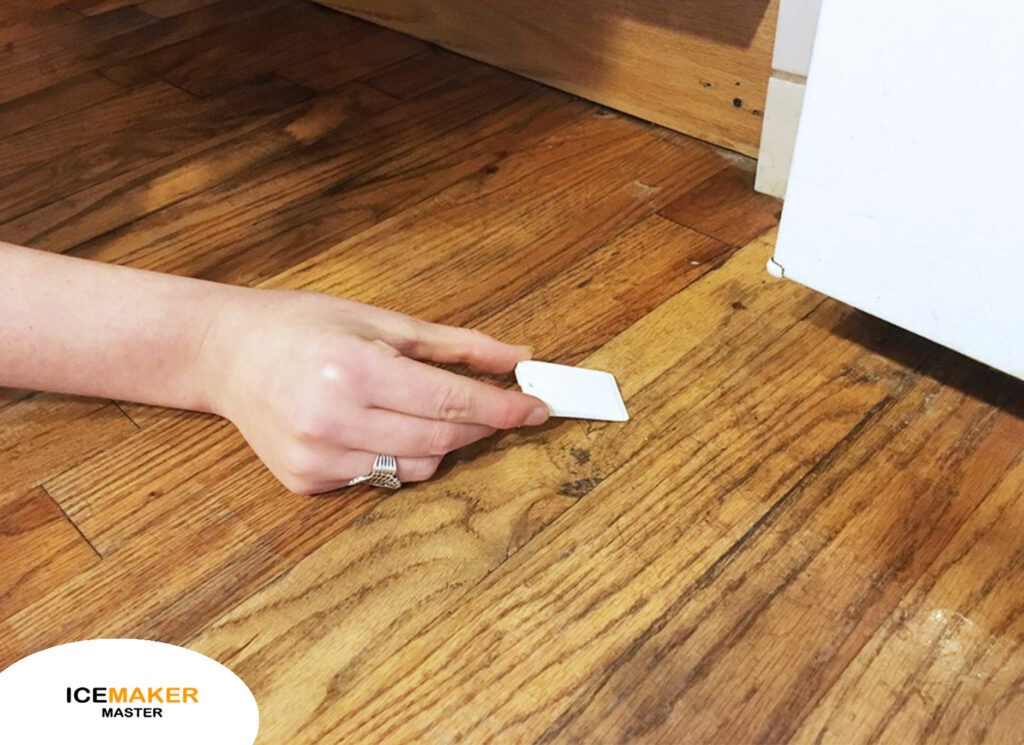
Inspect the Components of Ice Maker
Regular inspection of your ice maker components is essential to ensure consistent performance. At least once in a month check for any signs of damage or wear on critical parts like the water inlet valve and the ice mold thermostat.
If you identify faulty components during these checks, it is advisable to replace them as soon as possible. Damaged parts can hinder the ice-making process, leading to reduced efficiency or complete malfunctions.
By addressing and replacing worn-out components as needed, you not only restore optimal performance but also extend the lifespan of your ice maker. This proactive approach to maintenance helps avoid potential issues and ensures that your ice maker continues to function reliably when you need it.
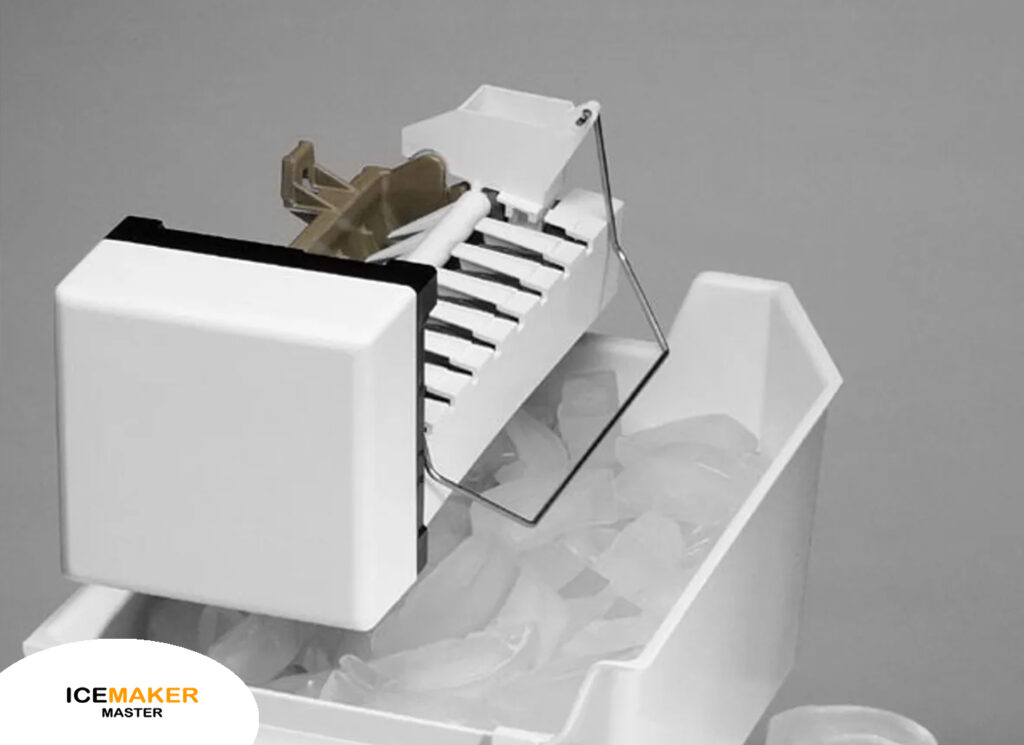
Use a Dedicated Water Line
Connecting your ice maker to a dedicated water line can significantly enhance its performance. Shared water lines with other appliances may lead to reduced water flow, affecting the ice-making process.
By using a dedicated line, you ensure a consistent and robust water supply, optimizing the efficiency of your ice maker. This step is particularly important in households with high ice demands, as it prevents competition for water resources among various appliances.
The result is a more reliable and efficient ice production, providing you with a continuous supply of ice for your beverages without interruptions caused by shared water lines.

Upgrade to a High-Capacity Model
For households with elevated ice demands, upgrading to a high-capacity ice maker is a practical solution. Newer models often boast features specifically designed to accommodate increased production needs.
By investing in a higher-capacity appliance, you ensure that your ice maker can meet the demands of a busy household, providing a more abundant and consistent supply of ice. These modern models typically incorporate advanced technologies and larger storage capacities, offering convenience and efficiency.
The upgrade not only enhances your ice maker’s performance but also caters to the evolving needs of a bustling household, ensuring you never run short of ice when you need it most.

Avoid Overstuffing the Freezer
Preventing your freezer from being overstuffed is crucial for maintaining the efficiency of your ice maker. When the freezer is packed to capacity, airflow can be restricted, hindering the ice maker’s performance.
To optimize efficiency, organize the freezer to allow proper ventilation, ensuring that cold air circulates effectively. This simple step promotes an ideal environment for the ice maker, facilitating the consistent production of ice.
By avoiding overstuffing, you not only prevent potential disruptions in the cooling system but also contribute to the overall effectiveness of your ice maker, ensuring a reliable and continuous supply of ice for your household needs.
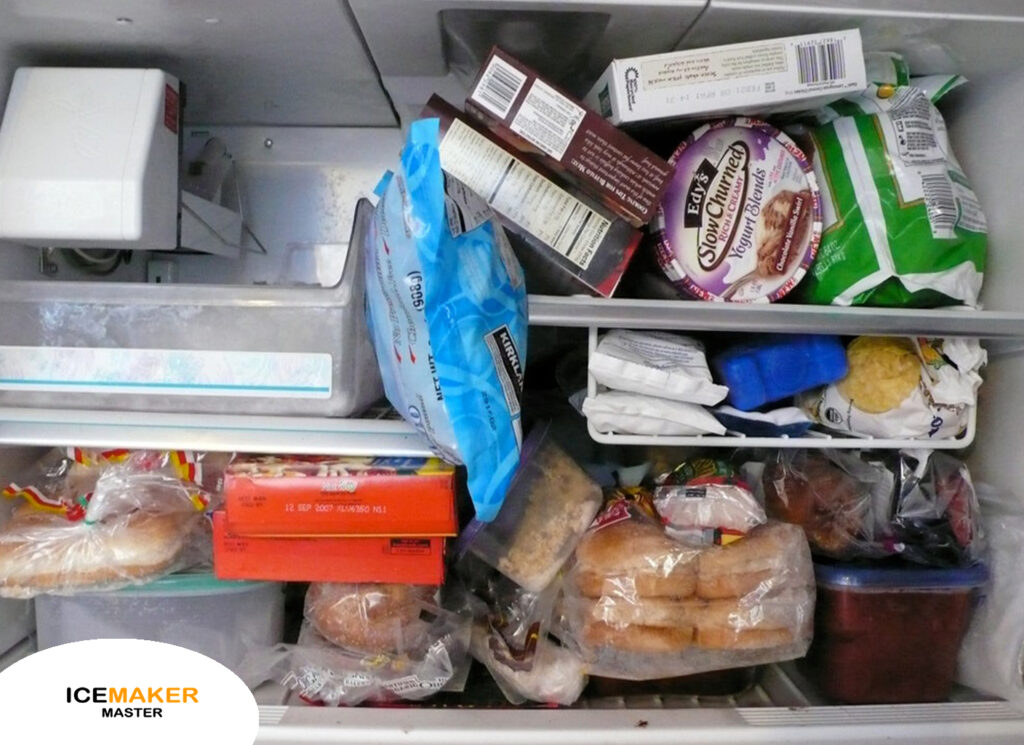
Suggestion
If your ice maker persists in less than ideal performance despite trying the provided tips, consider seeking professional help. Technicians can identify and address underlying issues beyond basic troubleshooting, ensuring a comprehensive and effective solution to restore your ice maker to peak performance.
FAQ
Why is my ice maker not producing enough ice?
There can be several reasons for your ice maker not producing enough ice such as, insufficient water supply, clogged filters, and incorrect temperature settings can affect ice production.
How often should I replace the water filter in my refrigerator?
Well, it’s recommended to replace the water filter every six months or according to the manufacturer’s guidelines to maintain optimal ice maker efficiency.
What components should I inspect in the ice maker?
Regularly check for damaged or worn-out components like the water inlet valve or ice mold thermostat. Replace faulty parts to restore optimal performance of the ice maker.
When should I consider professional help for my ice maker?
If your ice maker persists in suboptimal performance despite attempting the provided tips, it’s advisable to seek professional assistance for a thorough diagnosis and tailored solutions.
Why is avoiding an overstuffed freezer important for ice production?
An overstuffed freezer restricts airflow, reducing ice maker efficiency. Proper ventilation ensures cold air circulates effectively for consistent ice production.
Conclusion
Implementing the provided 10 tips and tricks is instrumental in optimizing your ice maker’s functionality, guaranteeing an uninterrupted supply of ice for various chilling requirements. Through consistent maintenance, meticulous attention to details, and a few necessary adjustments, you can make a substantial impact on your ice maker’s efficiency. Regular checks and adherence to recommended practices contribute to a smoother ice production process.

